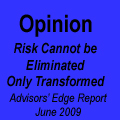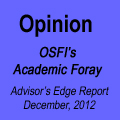Canadian consumer confidence took a hit:
Economic sentiment cooled for a second straight month in February, according to polling by Nanos Research Group for Bloomberg News, with Canadians increasingly concerned about the sustainability of the nation’s expansion.
It’s been a dramatic reversal in consumer confidence. Over the past two months, sentiment has dropped from near record highs to below average levels, reflecting an overall deterioration in economic conditions for households. These include three rate hikes by the Bank of Canada since July, a weakening Canadian dollar, sharp declines in stock prices, renewed worries about the housing market and a slowing economy.
…
Highlights of the Consumer Confidence Report•The decline in February was largely driven by expectations, rather than pocketbook issues
•For example, Canadians are becoming more negative on the economy’s outlook, with pessimists outnumbering optimists. About 22 percent of Canadians see the economy strengthening, versus about 28 percent who see it worsening. That’s the biggest negative month-end gap since last May
•A month ago, optimists outnumbered pessimists 28 percent to 23 percent
•Expectations for real estate prices also showed a small deterioration in February
•Pocketbook issues like job security and personal finances were largely stable or better in February, after posting large declines in January
•Regionally, Alberta and British Columbia recorded sharp declines in sentiment in February, possibly reflecting a pipeline dispute between the two provinces.
Meanwhile, sabre-rattling over trade continues:
The top U.S. trade envoy said on Monday that bilateral deals could replace NAFTA if the pact is not renegotiated soon, ramping up pressure on Canada and Mexico, already smarting from President Donald Trump’s plan to impose steel and aluminum tariffs.
U.S. Trade Representative Robert Lighthizer said political headwinds would increase the longer the negotiations dragged on, warning that time to rework the 1994 trade deal was running “very short.”
“We would prefer a three-way tripartite agreement. If that proves impossible, we are prepared to move on a bilateral basis,” Lighthizer said, reading from a statement in Mexico City at the end of a seventh round of talks.
…
The Mexico City round of NAFTA talks was thrown into disarray after Trump announced a plan last week to impose a 25 per cent tariff on steel imports and a 10 per cent tariff on aluminum imports, arguing they were needed to protect U.S. industries and jobs.Trump tweeted earlier on Monday that “Tariffs on Steel and Aluminum will only come off if new & fair NAFTA agreement is signed.”
Lighthizer said that meant Canada and Mexico would enjoy tariff exemptions once a NAFTA deal was reached, calling the tariffs an “incentive” to conclude the talks.
But there is no unanimity:
U.S. House Speaker Paul Ryan urged the Trump administration not to move forward on the tariffs, citing risks to the economy, after Trump’s threats led to warnings about retaliatory moves from trading partners.
But it’s entirely possible that the whole tariffs kerfuffle is just a negotiating tactic. Hasn’t Trump bragged about the power of bluster when making deals?
U.S. Trade Representative Robert Lighthizer said the Trump administration has offered to exclude Canada and Mexico from tariffs on steel and aluminum as an incentive to reach a deal on a new Nafta before a string of elections make it difficult.
President Donald Trump’s “view was that it makes sense that if we get a successful agreement, to have them be excluded,” Lighthizer told reporters in Mexico City on Monday following the seventh round of talks to renegotiate the North American Free Trade Agreement. “It’s an incentive to get a deal.”
| HIMIPref™ Preferred Indices These values reflect the December 2008 revision of the HIMIPref™ Indices Values are provisional and are finalized monthly |
|||||||
| Index | Mean Current Yield (at bid) |
Median YTW |
Median Average Trading Value |
Median Mod Dur (YTW) |
Issues | Day’s Perf. | Index Value |
| Ratchet | 0.00 % | 0.00 % | 0 | 0.00 | 0 | 0.2962 % | 3,064.5 |
| FixedFloater | 0.00 % | 0.00 % | 0 | 0.00 | 0 | 0.2962 % | 5,623.1 |
| Floater | 3.24 % | 3.43 % | 111,191 | 18.60 | 4 | 0.2962 % | 3,240.6 |
| OpRet | 0.00 % | 0.00 % | 0 | 0.00 | 0 | 0.2516 % | 3,162.9 |
| SplitShare | 4.70 % | 4.20 % | 65,046 | 3.31 | 5 | 0.2516 % | 3,777.2 |
| Interest-Bearing | 0.00 % | 0.00 % | 0 | 0.00 | 0 | 0.2516 % | 2,947.1 |
| Perpetual-Premium | 5.63 % | 4.73 % | 80,760 | 0.64 | 11 | 0.1441 % | 2,824.4 |
| Perpetual-Discount | 5.36 % | 5.54 % | 92,733 | 14.55 | 23 | -0.0598 % | 2,919.9 |
| FixedReset | 4.26 % | 4.52 % | 168,781 | 5.92 | 102 | -0.2184 % | 2,513.8 |
| Deemed-Retractible | 5.20 % | 5.75 % | 93,598 | 5.76 | 28 | 0.0654 % | 2,901.0 |
| FloatingReset | 3.00 % | 3.00 % | 37,581 | 3.69 | 10 | -0.0177 % | 2,766.0 |
| Performance Highlights | |||
| Issue | Index | Change | Notes |
| SLF.PR.H | FixedReset | -1.63 % | YTW SCENARIO Maturity Type : Hard Maturity Maturity Date : 2025-01-31 Maturity Price : 25.00 Evaluated at bid price : 21.74 Bid-YTW : 5.73 % |
| GWO.PR.N | FixedReset | -1.56 % | YTW SCENARIO Maturity Type : Hard Maturity Maturity Date : 2025-01-31 Maturity Price : 25.00 Evaluated at bid price : 18.90 Bid-YTW : 7.34 % |
| TD.PF.E | FixedReset | -1.42 % | YTW SCENARIO Maturity Type : Limit Maturity Maturity Date : 2048-03-05 Maturity Price : 23.19 Evaluated at bid price : 24.35 Bid-YTW : 4.77 % |
| NA.PR.E | FixedReset | -1.18 % | YTW SCENARIO Maturity Type : Limit Maturity Maturity Date : 2048-03-05 Maturity Price : 22.90 Evaluated at bid price : 24.31 Bid-YTW : 4.66 % |
| HSE.PR.A | FixedReset | 1.35 % | YTW SCENARIO Maturity Type : Limit Maturity Maturity Date : 2048-03-05 Maturity Price : 18.07 Evaluated at bid price : 18.07 Bid-YTW : 4.82 % |
| Volume Highlights | |||
| Issue | Index | Shares Traded |
Notes |
| TD.PF.A | FixedReset | 1,095,945 | YTW SCENARIO Maturity Type : Limit Maturity Maturity Date : 2048-03-05 Maturity Price : 23.08 Evaluated at bid price : 23.48 Bid-YTW : 4.47 % |
| TD.PF.C | FixedReset | 679,600 | YTW SCENARIO Maturity Type : Limit Maturity Maturity Date : 2048-03-05 Maturity Price : 22.82 Evaluated at bid price : 23.17 Bid-YTW : 4.52 % |
| TD.PF.H | FixedReset | 368,702 | YTW SCENARIO Maturity Type : Call Maturity Date : 2021-10-31 Maturity Price : 25.00 Evaluated at bid price : 25.82 Bid-YTW : 4.03 % |
| MFC.PR.Q | FixedReset | 158,950 | YTW SCENARIO Maturity Type : Hard Maturity Maturity Date : 2025-01-31 Maturity Price : 25.00 Evaluated at bid price : 24.75 Bid-YTW : 4.89 % |
| BMO.PR.C | FixedReset | 125,962 | YTW SCENARIO Maturity Type : Call Maturity Date : 2022-05-25 Maturity Price : 25.00 Evaluated at bid price : 25.12 Bid-YTW : 4.43 % |
| RY.PR.H | FixedReset | 116,926 | YTW SCENARIO Maturity Type : Limit Maturity Maturity Date : 2048-03-05 Maturity Price : 23.11 Evaluated at bid price : 23.55 Bid-YTW : 4.46 % |
| NA.PR.E | FixedReset | 106,700 | YTW SCENARIO Maturity Type : Limit Maturity Maturity Date : 2048-03-05 Maturity Price : 22.90 Evaluated at bid price : 24.31 Bid-YTW : 4.66 % |
| There were 35 other index-included issues trading in excess of 10,000 shares. | |||
| Wide Spread Highlights | ||
| Issue | Index | Quote Data and Yield Notes |
| HSE.PR.E | FixedReset | Quote: 25.02 – 25.30 Spot Rate : 0.2800 Average : 0.1983 YTW SCENARIO |
| SLF.PR.H | FixedReset | Quote: 21.74 – 21.96 Spot Rate : 0.2200 Average : 0.1486 YTW SCENARIO |
| MFC.PR.N | FixedReset | Quote: 23.37 – 23.63 Spot Rate : 0.2600 Average : 0.2022 YTW SCENARIO |
| BAM.PF.C | Perpetual-Discount | Quote: 21.60 – 21.82 Spot Rate : 0.2200 Average : 0.1669 YTW SCENARIO |
| BMO.PR.R | FloatingReset | Quote: 24.71 – 24.85 Spot Rate : 0.1400 Average : 0.0975 YTW SCENARIO |
| TD.PF.I | FixedReset | Quote: 25.04 – 25.20 Spot Rate : 0.1600 Average : 0.1185 YTW SCENARIO |














































































































LCS.PR.A To Be Extended
Friday, March 2nd, 2018Brompton Group has announced:
LCS.PR.A had a treasury offering in January and was upgraded to Pfd-3(low) by DBRS last October. It is tracked by HIMIPref™ but relegated to the Scraps subindex on credit concerns.
Posted in Issue Comments | No Comments »